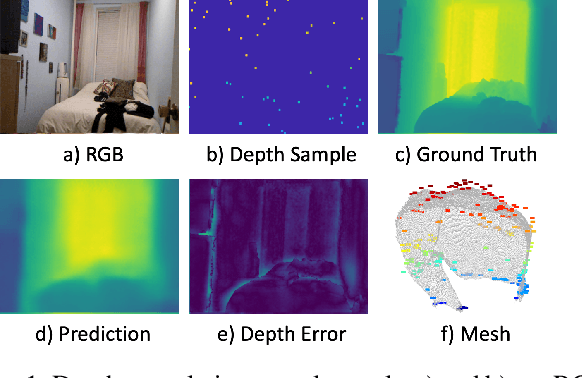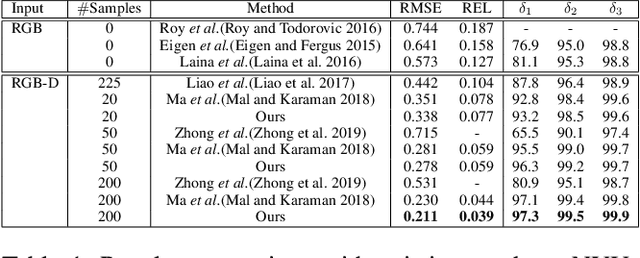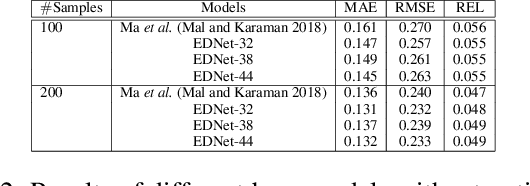Matias Aiskovich
Sparse Depth Completion with Semantic Mesh Deformation Optimization
Dec 10, 2021



Abstract:Sparse depth measurements are widely available in many applications such as augmented reality, visual inertial odometry and robots equipped with low cost depth sensors. Although such sparse depth samples work well for certain applications like motion tracking, a complete depth map is usually preferred for broader applications, such as 3D object recognition, 3D reconstruction and autonomous driving. Despite the recent advancements in depth prediction from single RGB images with deeper neural networks, the existing approaches do not yield reliable results for practical use. In this work, we propose a neural network with post-optimization, which takes an RGB image and sparse depth samples as input and predicts the complete depth map. We make three major contributions to advance the state-of-the-art: an improved backbone network architecture named EDNet, a semantic edge-weighted loss function and a semantic mesh deformation optimization method. Our evaluation results outperform the existing work consistently on both indoor and outdoor datasets, and it significantly reduces the mean average error by up to 19.5% under the same settings of 200 sparse samples on NYU-Depth-V2 dataset.
 Add to Chrome
Add to Chrome Add to Firefox
Add to Firefox Add to Edge
Add to Edge